I’m With The Band – Michael Grant and Eric Cathcart with The Black Keys
Posted on January 5, 2023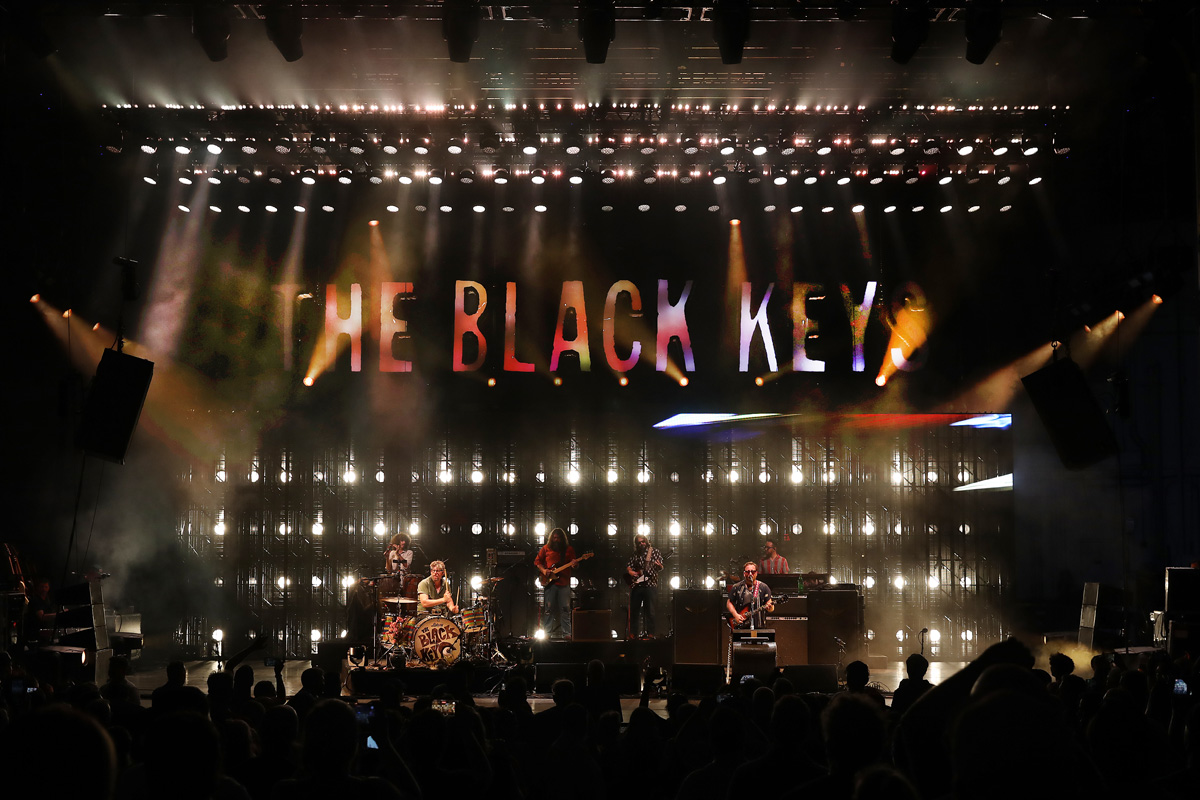
Photo: Todd Kaplan
It’s safe to say that success has not spoiled The Black Keys. After four Grammy Awards and ten highly rated albums, the Dan Auerbach and Patrick Carney still maintain the raw, bluesy garage band feel that brought them together in Akron, Ohio a little over 20 years ago. Perhaps that why the duo is such a good fit with their intensely focused lighting designers Michael Grant and Eric Cathcart of Big Tim Lighting Design
Their relationship began in 2008, when Michael, then working in a Chicago club, was recommend to the band by their sound engineer who thought he would be a good fit as their lighting designer. A few years later, he was joined by Eric, and they’ve been collaborating on power-packed designs ever since.
The two designers shared their experience with us, talking about some of the highlights of their time with the band and the lessons they’ve learned along the way.
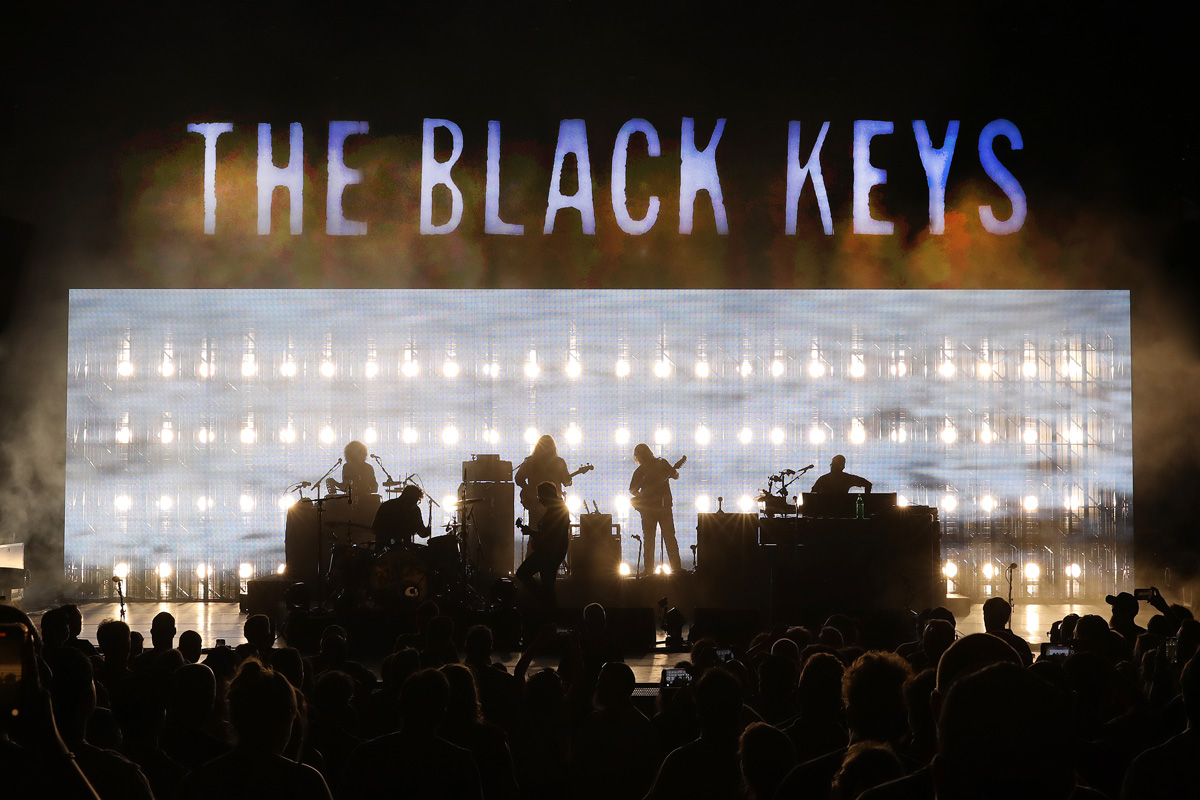
Photo: Todd Kaplan
The Black Keys have enjoyed incredible success, yet they still have retained their original rough garage band demeanor. Having worked for them, do you have any thoughts on why that it?
Michael: “After playing together as long as they have, you really figure out what works. Although the vibe or sound may change from record to record, the foundation is always consistent. They are two guys who love rock and roll, and they interpret it the best way they know how.”
Eric: “I think it’s just who they are. When you look at their influences, none of them are particularly large acts. What they listen to, and what their influences were are who they still are today.”
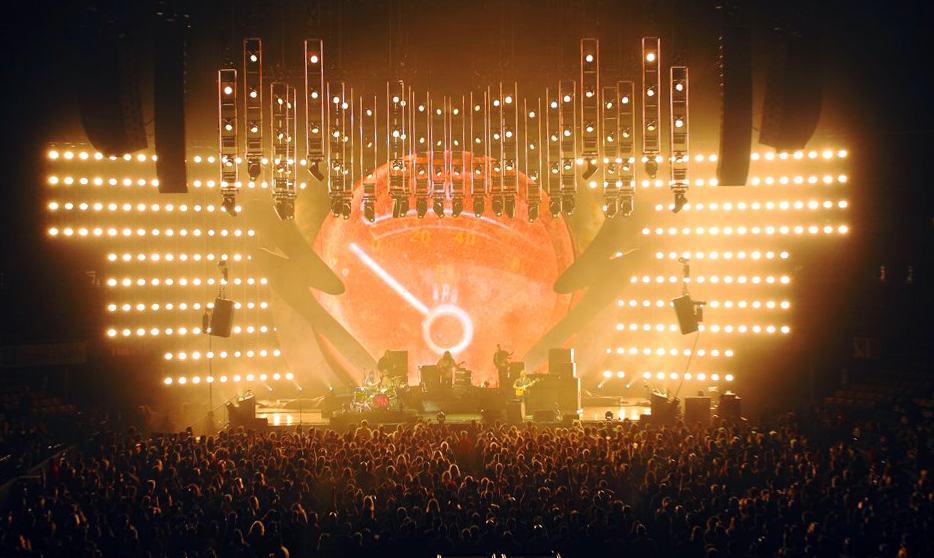
Photo: Todd Kaplan
Blues infuses a lot of The Black Keys music. How does this influence your lighting design?
Michael: “The way I see it, blues music has always been about taking basic elements, and creating something special with them. Not about how many notes you can play, or how flashy your show is, but what works for the song, musically, emotionally, and visually. I love watching old videos of Howlin Wolf. The amount of power that comes out of that with simply just a guitar or a harmonica is incredible. We try to use that mindset in lighting design. Bold and uncomplicated but simply captivating.”
Eric: “Another important thing to remember is that one of the main goals that we strive to achieve is to make the arena shows not feel like arena shows.”
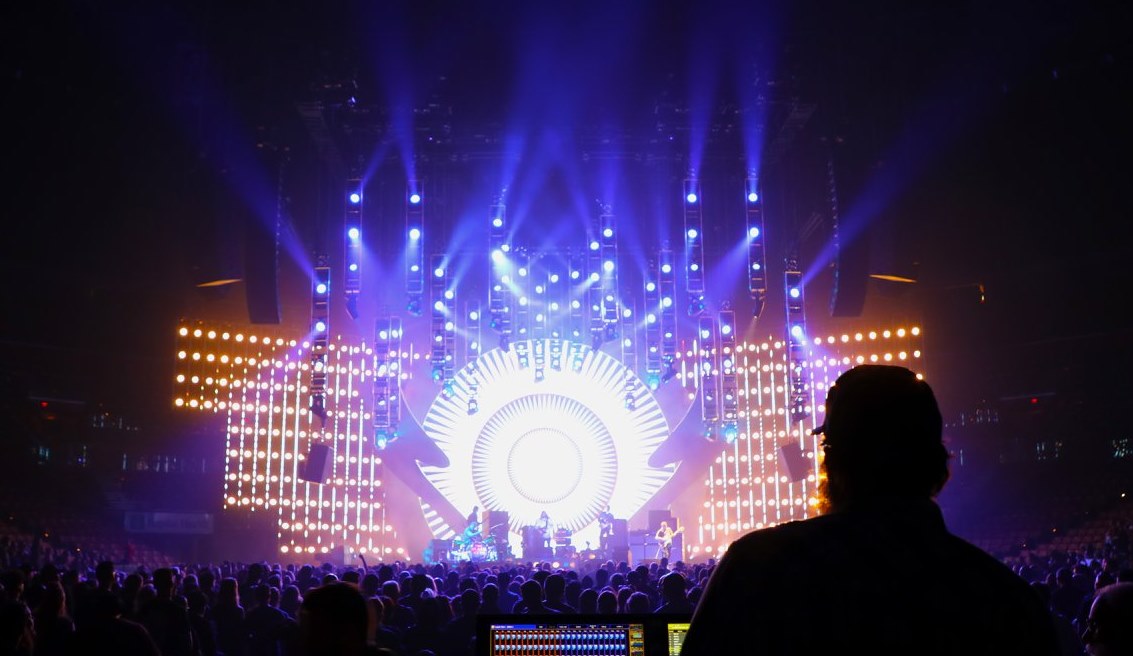
Photo: Todd Kaplan
How involved do the two members of The Black Keys get in lighting design? Do they make suggestions? Ask you questions?
Eric: “They give us pretty much free rein to do what we feel works best for the tour. We’ll take a few cues from the current album aesthetic; on occasion they will throw out an idea for a particular piece of content. Once there was a mention that they think the show needs another gag, but for the most part that is it. The main thing for me is that they have never said no to the big picture of the design, we’ve never had to go ‘back to the drawing board’ so to speak.”
Michael: “We are very lucky to have the working relationship we do with Dan and Pat. There is an amazing amount of trust between us but that also includes a level of honesty where ideas and criticisms can flow freely between everyone. Every tour, each member has something that they want to bring to the production and we are happy to hear those ideas and make them real. They also give us the freedom as the creative designers to do what we think is best for the show.”
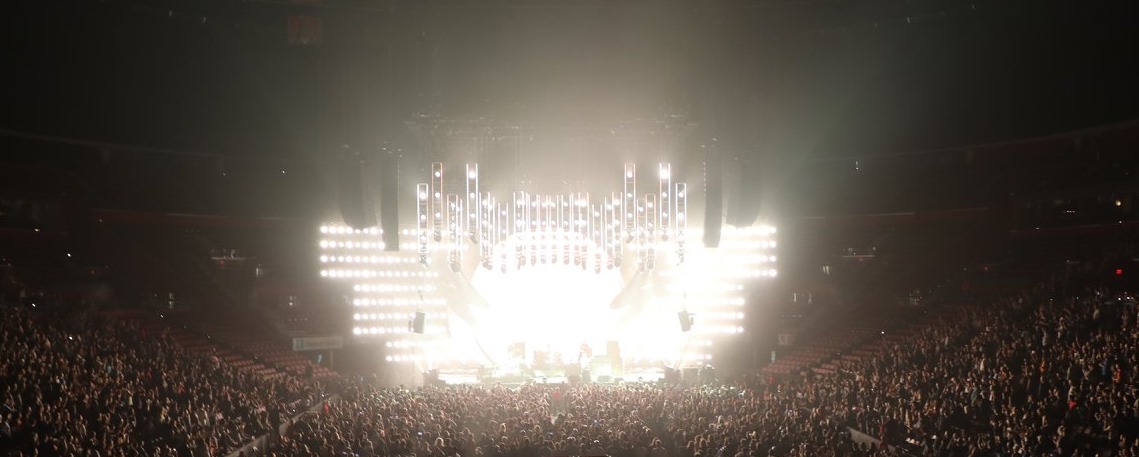
Photo: Todd Kaplan
Is there any one show you’ve done for The Black Keys that stands out as your favorite?
Michael: “For me, I believe it was one in 2010; we did an early show in Central Park in New York, then a late show at Terminal 5. I remember carrying my lighting desk though the park directly after the show to a cab to get to Terminal 5 on time. It was in the dog days of a New York summer and Terminal 5 felt like it was 500 degrees inside, but the energy was unmatched. The floor rig of nothing to par cans may have added to the heat, but it was unforgettable.”
Eric: “I don’t have a specific show, but I am partial to the first design that Mike and I worked on together. There was a particular rawness to that one that we haven’t been able to capture since.”
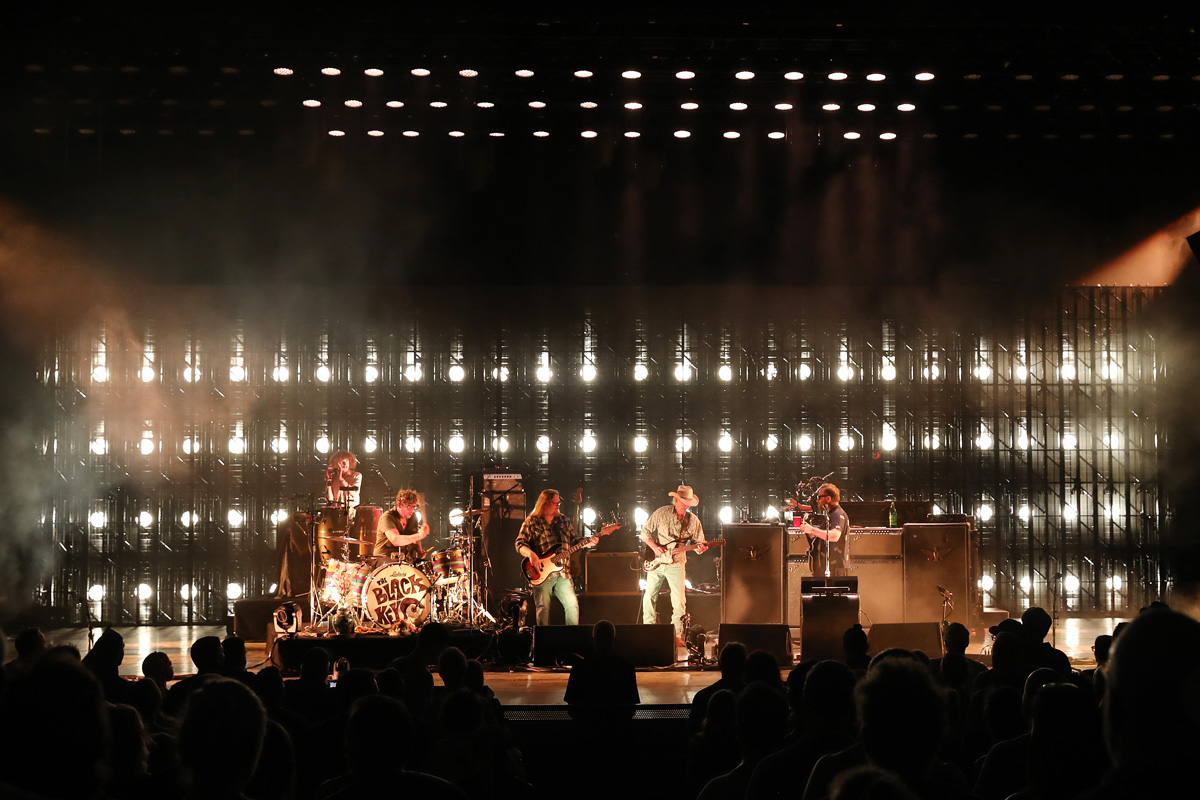
Photo: Todd Kaplan
What’s the best thing about working for The Black Keys?
Michael: The music itself. When you actually enjoy the band, you are trying to light, it not only makes the job easier, it’s also a joy to do.
Eric: “Getting to listen to them play every night. I was a big fan before I started working with them — and I still get a charge out of every show.”
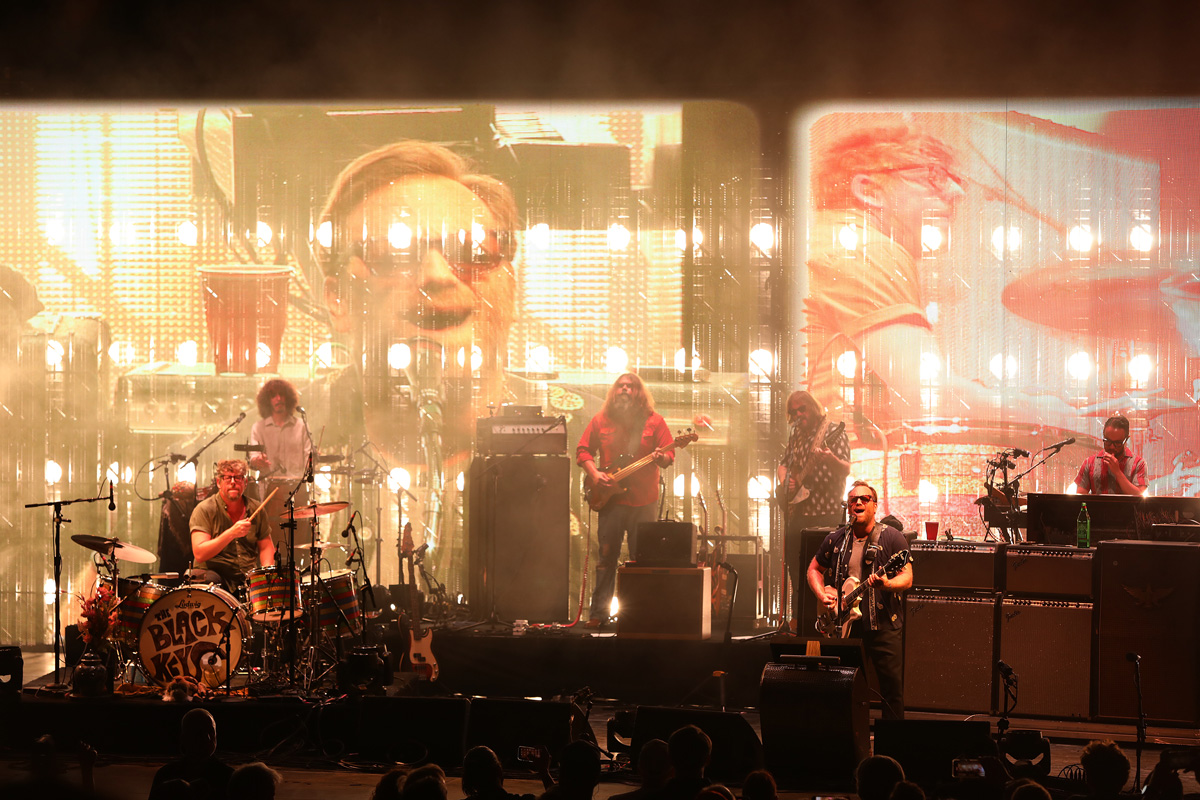
Photo: Todd Kaplan
What’s the most challenging thing?
Michael: “Honestly, it’s managing my own expectations. I always want things to be perfect, but in touring that is not always possible. Being able to step back, take a deep breath and keep moving forward. It’s something I’ve been working on for years and will continue to work, but I don’t see that mindset leaving totally anytime soon.”
Eric: “Keeping the show grounded. With the budget that we are working with, it would be easy to just go bonkers with the design. I already worry about having too much technology for a Blues/Garage rock show as it is.”
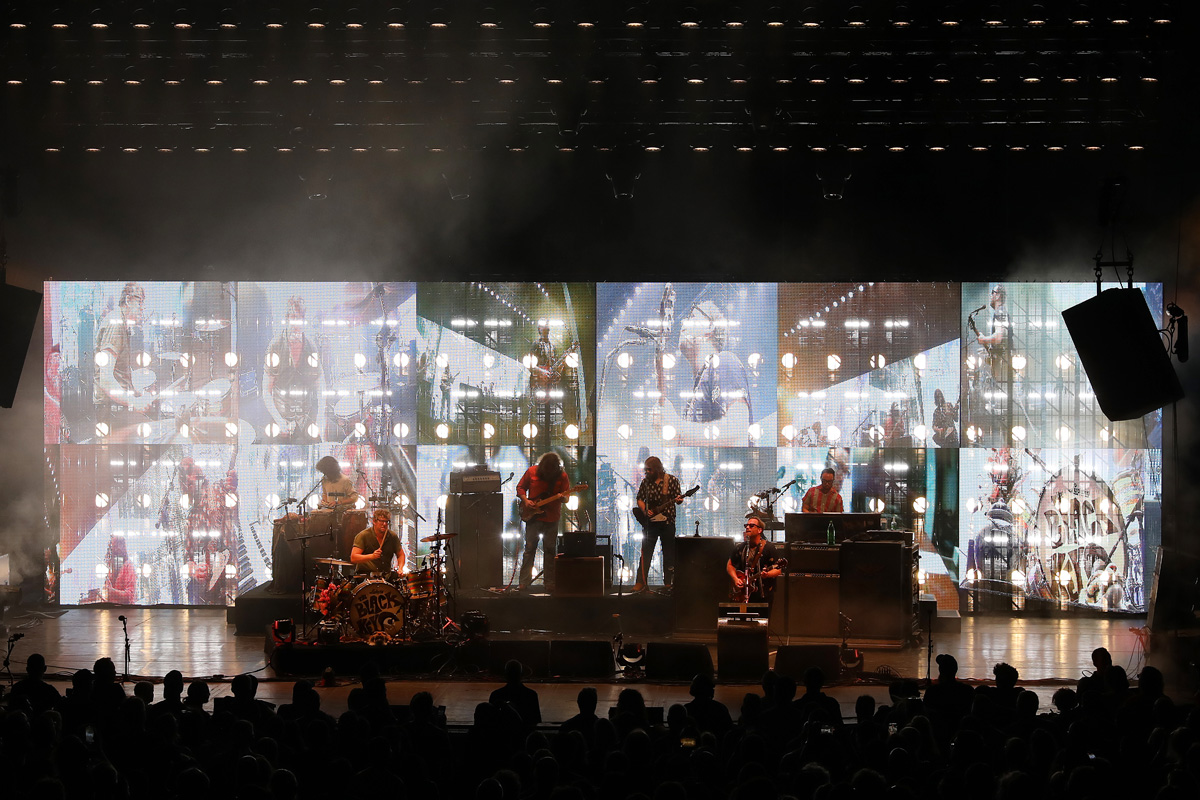
Photo: Todd Kaplan
How has working for The Black Keys influence your development as a lighting designer?
Michael: “It’s funny to see my hand drawings of the early tours to what we are doing now and see how much knowledge I’ve gained as a “designer” in 15 years. Working with Dan and Pat this long has taught me about growth, simple growth. As long as you keep creating, as long as you try to push your own creative boundaries, you grow. No matter what critics say, you are still growing. Progression is the most important part of being an artist.”
Eric: “I have learned to hold back, that the space between the lights is just as important as the lights themselves. Prior to working with Mike and The Black Keys, my M.O. was bigger-bigger-bigger. Now I am able to reel it in a bit, that has spilled over to other shows that I design, and I think that I am a better designer for it.”